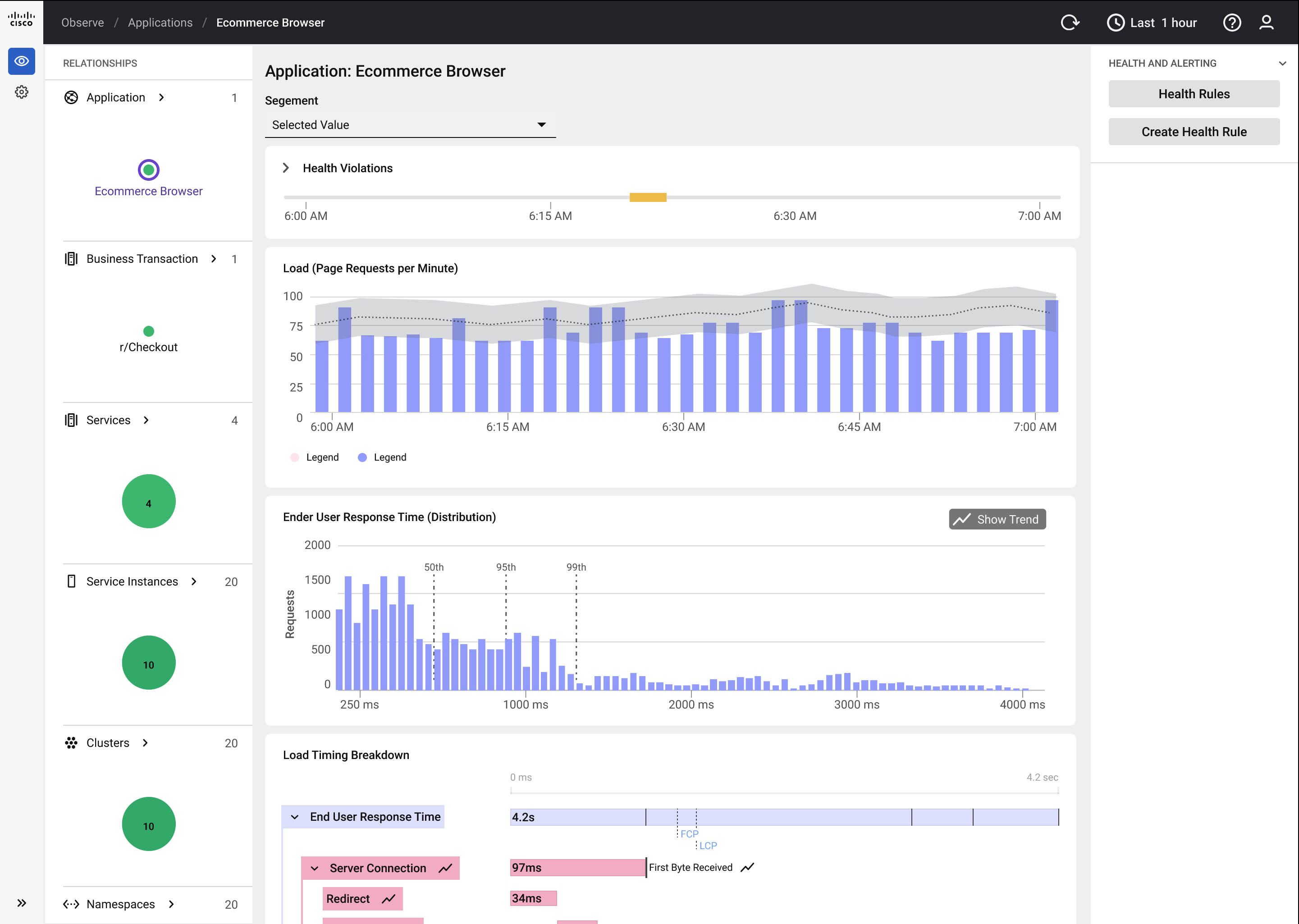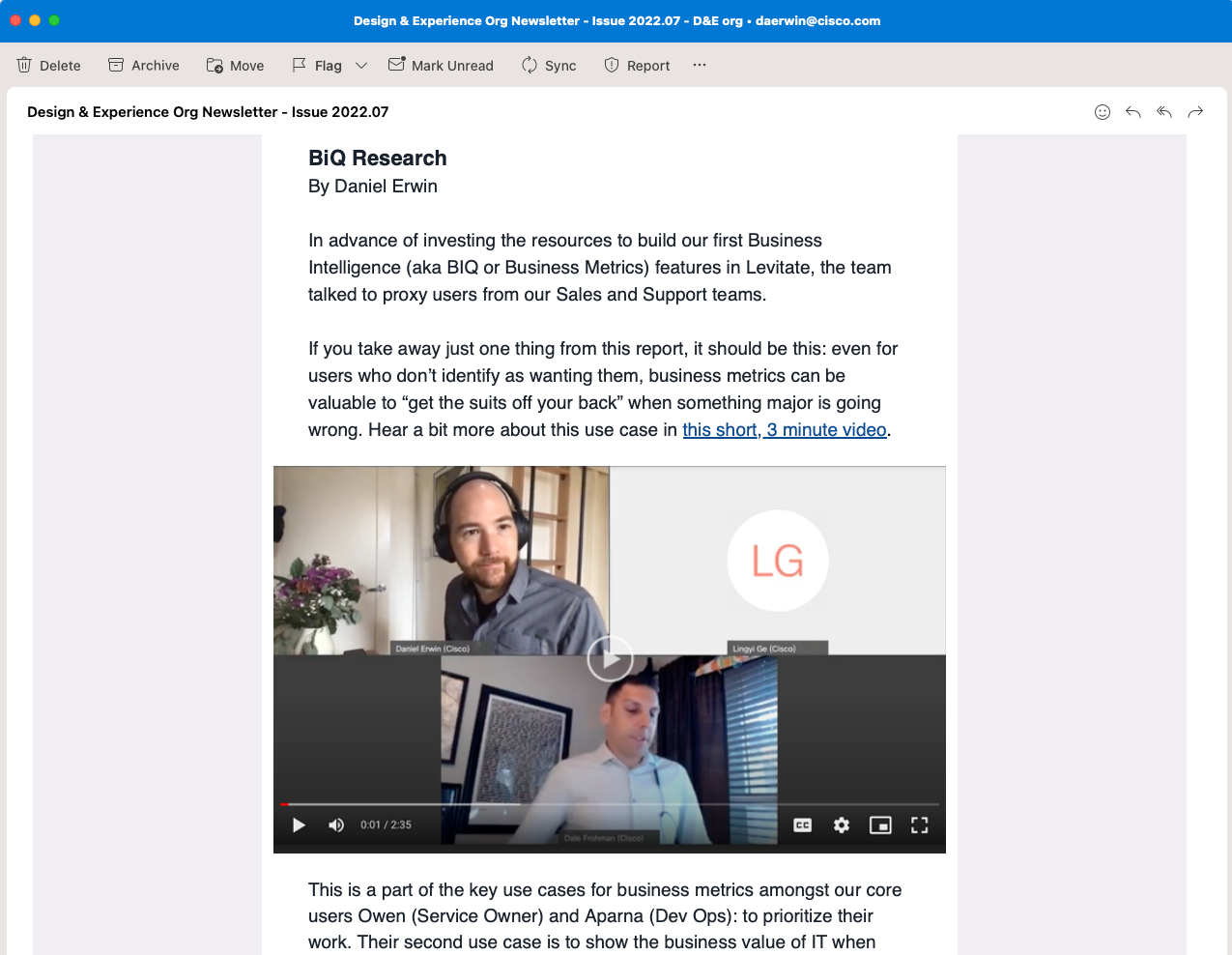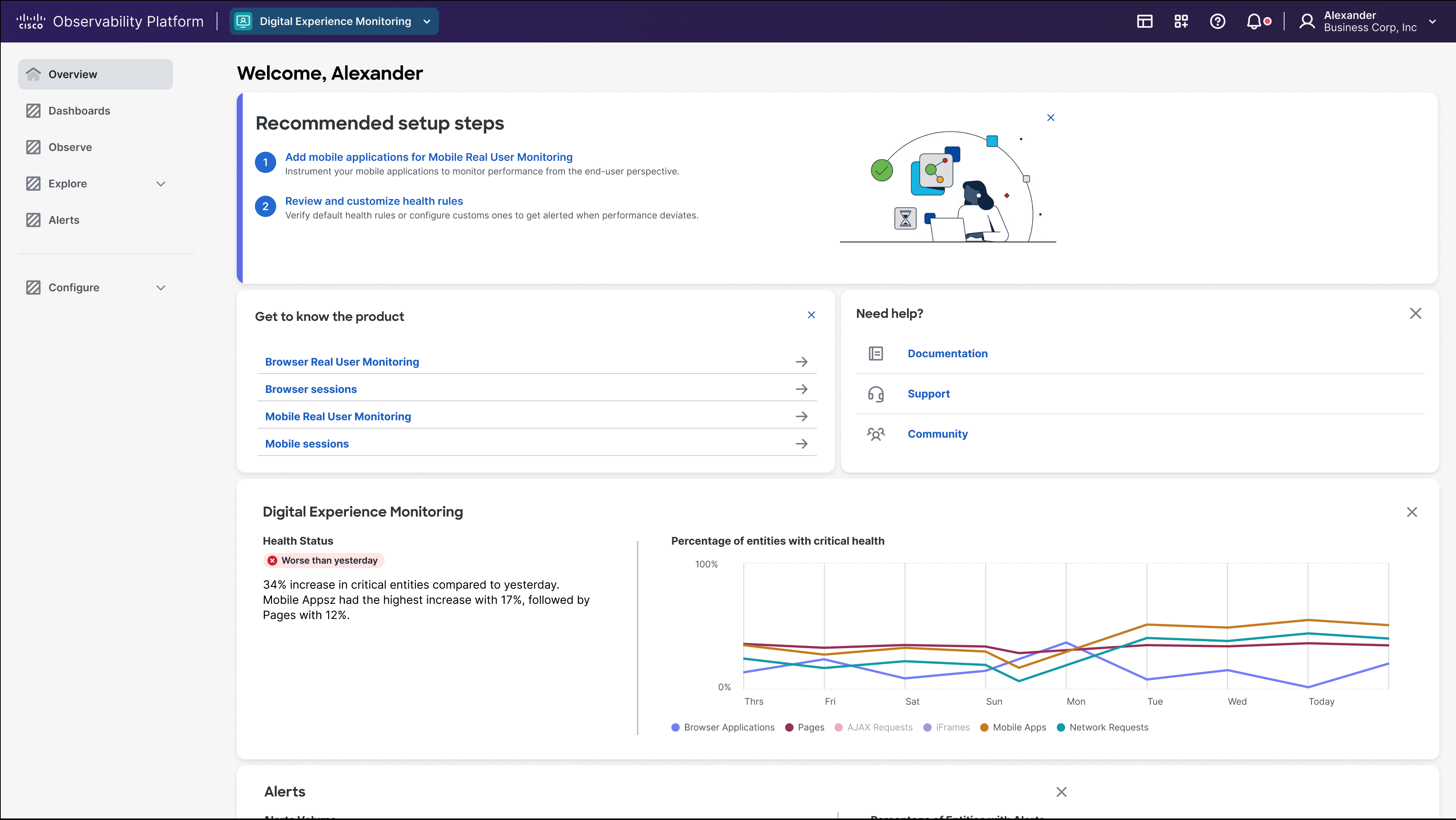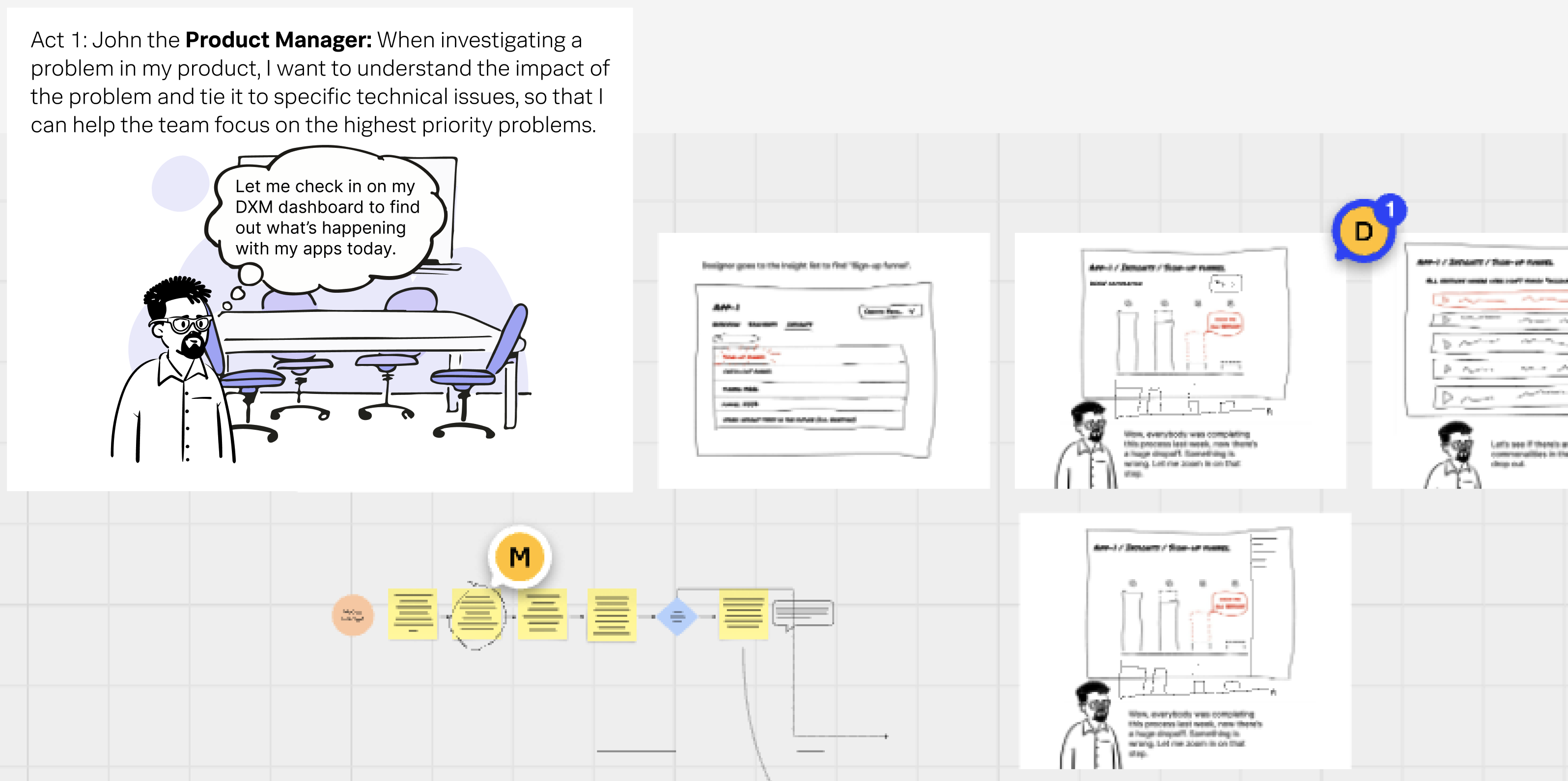As the Product Designer for Browser and Mobile Real User Monitoring at AppDynamics, and then at Splunk (both Cisco acquisitions), I bring simplification and delight to our core technical users who come to the product to understand what is going wrong with their apps. For example, the ThousandEyes Integration (15 minute video) drove cross-sales to thousands of customers who were not yet using both products.
1

This also means squeezing tons of signals that arrive in the observability platform onscreen in as small a space as possible. A deep understanding of the data - how it will be used, how it is processed, and where it comes from - is vital to selecting the most valuable dimensions, combinations, and segmentations to reveal. All of this came together in one small feature that I pushed the team to act on because it was driven by a vocal customer but also would demo well to many more customers: Subselection Concept.
2

A key part of the design process is to frequently take time to connect with users to get a deeper understanding of their processes and concerns, as well as to validate that a solution I've put together makes sense to them the first time they see it. I framed the research pictured here to set a solid foundation for the Business Insights product, which deserved the investment of our time to understand deeply since it is "the tip of the spear" in opening up sales conversations with the highest-level stakeholders at customer organizations.
3

The biggest challenge with observability platforms - like most technical systems - is in the onboarding and setup. Not just how to get it setup - but why, and what are the options for what this huge complex product can do? This is the area where design most takes the lead, and I created several clever solutions that greatly reduced time to value for customers. One small example where I highlighted how to do this in a way that opened a conversation about standardization with a large design team: Onboarding Progressive Reveal (3 minute video).
4

At the same time, I also lead UX Design for the Digital Experience Monitoring program, I was responsible for helping the design team understand how users would get use multiple areas of the product to achieve higher-value usecases than they could from any one area alone. Here's a sample of the beginning stages of one scenario I used to help the team get on the same page about the user's goals and ultimate value, and to drive a conversation about the long-term priorities and agenda with Product Management and Engineering partners.
5
